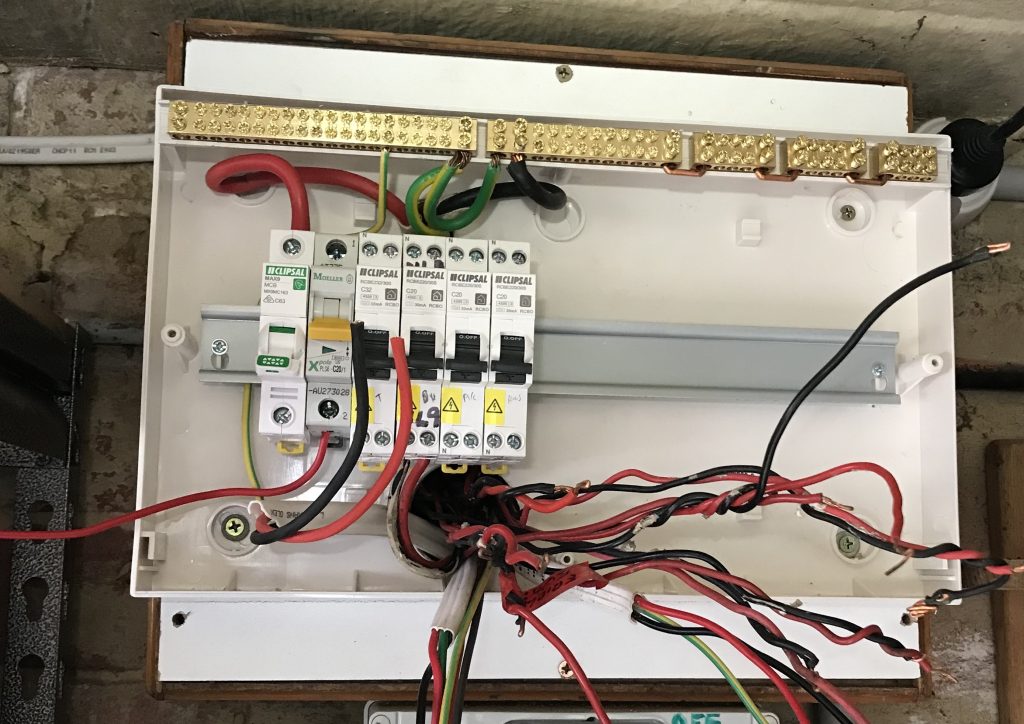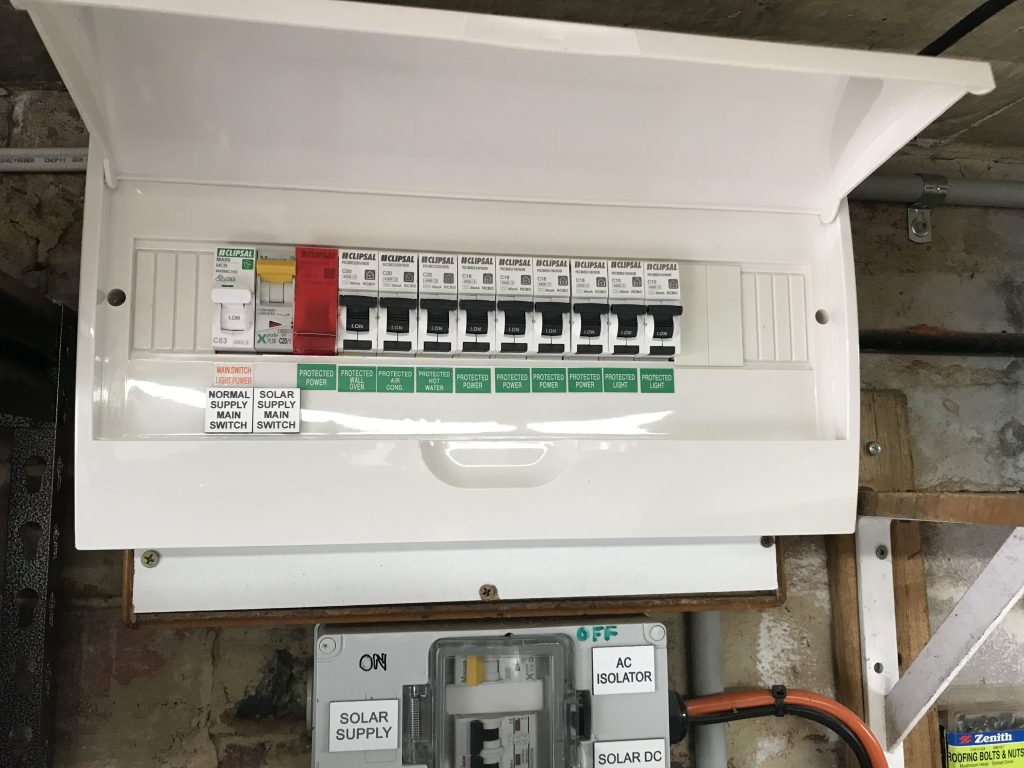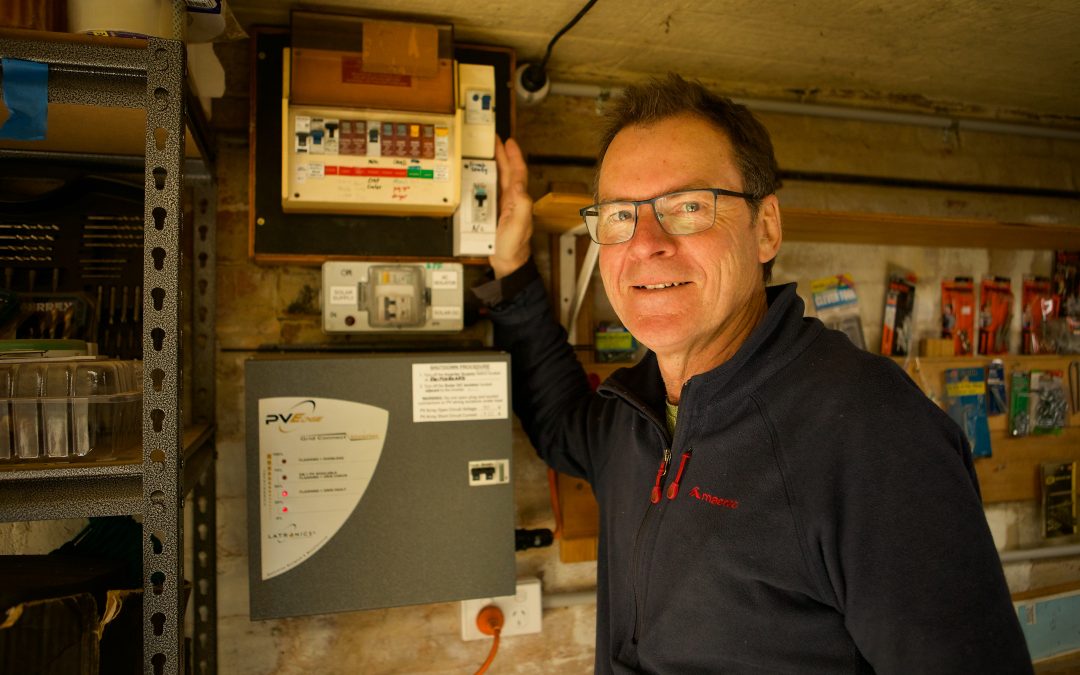Do I need to go 3-phase? And ‘do I need to upgrade my switchboard’?
Many households and apartments will be well on the way to being ‘all electric’ over the next five to ten years and some owners are wondering ‘do I need to go 3-phase? And do I need to upgrade my switchboard’?
This article describes some of our journey.
Single-phase or 3-phase?
The vast majority of houses in Australia have a single-phase connection to the street. Typically, the main fuse is 40 amps or 63 amps. Although in some older, inner-city homes, they may have a 32 amp connection possibly still with ceramic fuses (that terrace house in Carlton!).
Our existing street connection is a single-phase, 63 amp fuse. This will be plenty big enough to supply our 4-bedroom house, and an induction stove and a 7 kW EV charger. To put this in more context, I know some-one who has a connected theoretical load of 230 amps worth of appliances on a 63-amp street fuse house and has not experienced over-current trips. ‘Diversity’ means households will rarely, if ever, try to run all appliances at the same time. But discuss your situation with your sparkie, who should be able to help you arrive at a decision whether your ‘diversity of use’ indicates that 40 amps, or 63 amps is sufficient. The default is keeping what you already have, including staying single-phase rather than going to 3-phase.
Note: We think the overwhelming majority of households can stay single-phase, and that drawing 63 amps at any given time will not be an issue. There is not a lot of downside in any event – to staying with single-phase for now – then upgrading later to 3-phase if it seems very desirable to be able to draw more than 63 amps.
Why would I need to upgrade my switchboard?
Every time an ‘appliance’ such as a gas hot water unit or a gas ducted heater fails, the aim is to replace it with electric. For a gas hot water (HW), that means replacing with an electric heat-pump HW, for a gas ducted heater that means replacing it with a reverse-cycle air conditioner (good for both heating & cooling!).
As well, some household will install rooftop solar.
And people will consider buying an electric vehicle (EV) as either the only vehicle, or alternately, buying an EV as the primary work-horse with one old internal combustion engine (ICE) car in reserve. Some are reasoning this could be better than owning two newish ICE cars. An ‘all electric’ house may include installing a 7kW EV charger– although plenty of people just use a ‘granny charger’ plugged into a 10 amp powerpoint.
Over a 10-year period, a home might add three to six electric appliances, with some appliances – not necessarily all – needing a new wiring circuit back to a new circuit breaker (CB) at the main switchboard.
At some stage you (like us) might run out of room on the switchboard for additional CB’s. This might then entail a minor upgrade, or it might be more economic to bite the bullet and install a larger switchboard – thus future-proofing the move to all electric.
We recently replaced by 30-year-old switchboard (installed 1990’s). The existing switchboard was out of space, and adding a separate CB next to the switchboard every time was becoming problematic space-wise. Modern switchboards have DIN-rail mounted CB’s (a DIN rail is a Euro standard metal rail that modern CB’s can be easily clipped onto).
How to minimise costs:
Every house is different though, so you’ll need your electrician to come to site and check and discuss with you.
My existing switchboard had space for one Main switch and 10 CB’s. My electrician advised a new switchboard with space for 18 CB’s would fit nicely – leaving me future space for an additional five new CB slots (for an induction stove, and RCAC’s for example).
So, game on, we’re staying single-phase, satisfied with the existing 63-amp fuse for our house, and we are going with a new switchboard.
Four weeks later……. today we’re replacing the 1990s electrical switchboard and installing an EV charger (7 kW).
You can see (refer very top photo) that the old switchboard is full – there is simply no more space for any more circuit-breakers. You can also see a separate circuit breaker (CB) for a reverse cycle air-con below (where my hand is) – installed a year ago.
The new switchboard will have 18 CB slots. While upgrading the switchboard, it is not much extra cost to have new CB’s each with its own integrated safety switch instead of one safety switch for all circuits.

Re-wiring in progress! (photo above)
I suspect, and am yet to verify, that we spent $1,000 for this upgrade to 18 CB slots. We will save $1,000 to $2,000 in future compared to installing extra circuit breakers next to the old full switchboard – if that was possible. This should make the install of future electrical appliances quicker, i.e. simpler to clip in a CB in the new switchboard. A bonus is that trouble-shooting future circuit trips is also simpler.

Our new switchboard, fully installed.

